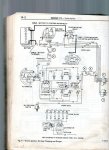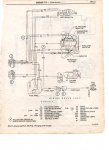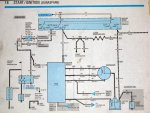wesside 73
New member
- Joined
- Feb 28, 2017
- Messages
- 7
- Reaction score
- 0
Hey all, i recently came into possesion of a 73 bronco that was used as a woods buggy. The previous owner stripped it down to basically nothing with intensions to upgrade suspension, roll cage, and custom body panels etc. Anyway, he stripped out all the wiring, left a mess and lost interest lol.
In still pretty new to working on this stuff but managed to rewire the basics of the ignition system using a couple different schematics and finally had it started for the first time the other day. (Put new coil, points/condensor, sylenoid on it which helped rule out lots of problems). I think all is pretty good, its a bare bones wiring job ommitting 80% of what's on the schematics and leaving only basics to keep the engine running.
I did notice the wires going to the coil and key feel a bit warm...and im not certain my voltage reg is working.
Wondering if anybody has a good schemaic for the iginition system.... or could sketch out the basics of what i need to keep it running (im hoping i have it right...).
From what i can tell there is bacically only about 8 or so wires needed. I dont know how to test the voltage reg for proper operation. Also, i read that there should be a resistor wire going to the coil (which i didn't do). The fact the wires are getting warm has me a bit nervous.
In still pretty new to working on this stuff but managed to rewire the basics of the ignition system using a couple different schematics and finally had it started for the first time the other day. (Put new coil, points/condensor, sylenoid on it which helped rule out lots of problems). I think all is pretty good, its a bare bones wiring job ommitting 80% of what's on the schematics and leaving only basics to keep the engine running.
I did notice the wires going to the coil and key feel a bit warm...and im not certain my voltage reg is working.
Wondering if anybody has a good schemaic for the iginition system.... or could sketch out the basics of what i need to keep it running (im hoping i have it right...).
From what i can tell there is bacically only about 8 or so wires needed. I dont know how to test the voltage reg for proper operation. Also, i read that there should be a resistor wire going to the coil (which i didn't do). The fact the wires are getting warm has me a bit nervous.



